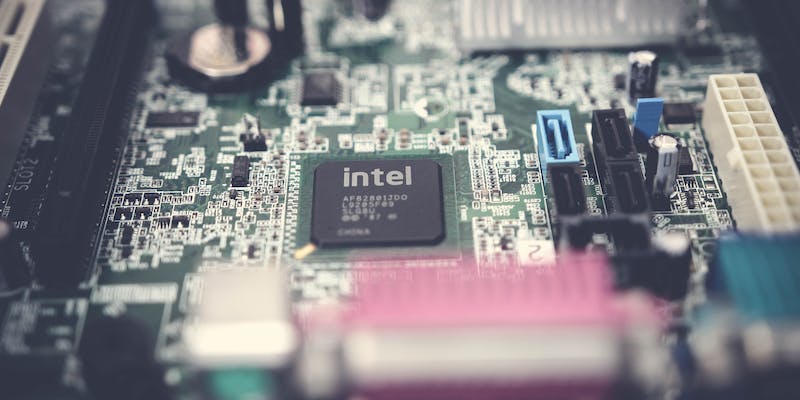In an effort to create an all-new ‘Silicon Heartland’ in the middle of the country, Intel embarked on an aggressive expansion plan. One of the key components of this plan was the establishment of a state-of-the-art manufacturing facility in Ohio. However, the company has recently announced a one-year delay in the opening of the fab, now scheduled for 2026. This delay has been attributed to the unexpected downturn in the PC market and a lack of funding from the CHIPS Act. In this article, we delve into the details of the challenges faced by Intel and the implications of this delay on its future.
Delay in Fab’s Opening
The eagerly anticipated opening of Intel’s Ohio fab has been pushed back to 2026. This decision was officially announced by the company, citing the unexpected downturn in the PC market and the lack of funding from the CHIPS Act as the primary reasons for the delay. Intel had hoped to capitalize on the CHIPS Act, which aimed to boost US semiconductor production, to fund its ambitious $20 billion Ohio project. However, the slow rollout of these funds and market challenges have hindered their plans.
Unexpected Challenges
Intel has encountered several unexpected challenges in its pursuit of establishing the Ohio fab. Besides the downturn in the PC market, the slow distribution of CHIPS Act funds has posed a significant obstacle. The company had relied on these funds to kick-start its multi-billion-dollar project, but unfortunately, they have yet to materialize. Despite the government approving $52 billion in funds to support the semiconductor industry, only a meager $35 million has been delivered to date, and that too to an obscure defense contractor. This immense delay has left Intel in a predicament, unable to access the necessary funds to proceed as planned.
Impact of PC Market Downturn
The PC market, like many other sectors, has been affected by the aftermath of the global pandemic. A spending spree during the pandemic resulted in a temporary surge in demand, but as economies recover, the market has experienced a downturn. This downturn has impacted various PC companies, including Intel. Nevertheless, industry experts predict a rebound in the PC market by 2024, which could offer a ray of hope for Intel and other players in the industry.
Uncertain Future for Intel
The delay in the opening of the Ohio fab and the challenges Intel is currently facing have cast a shadow of uncertainty over the company’s future. Adding to the concern, Intel recently projected first-quarter 2024 earnings below estimates, raising further questions about its financial stability. While the company has been a dominant force in the semiconductor industry for decades, industry trends and changing market dynamics pose significant challenges that Intel must navigate to remain competitive.
Delay in CHIPS Act Funds
Despite the passage of the CHIPS Act into law in August 2022, the much-needed funds have yet to materialize. Intel, along with other semiconductor companies, eagerly awaited these funds to advance their manufacturing capabilities. While the government initially allocated $52 billion, only a small fraction of that amount has been disbursed. This delay has hampered the progress of not only Intel’s Ohio fab but also the broader semiconductor industry’s plans to boost domestic production.
Impact on Intel’s Plans
The delay in receiving funds from the CHIPS Act has had a profound impact on Intel’s expansion plans, particularly its Ohio project. The company had hoped to have billions of dollars wired into its account by now, allowing it to invest in the Ohio facility as per the original timeline. However, the delay in funding has forced Intel to reassess and modify its plans, putting the Ohio fab project in jeopardy. This setback not only affects Intel’s growth ambitions but also the company’s ability to contribute to the advancement of semiconductor manufacturing in the United States.
Progress on the Ohio Facility
Despite the setbacks, Intel has not halted all progress on the Ohio facility. The company has made significant strides in its construction and development efforts, ensuring that the project remains on track, albeit with a delay. Intel anticipates that several thousand people will be employed at the Ohio fab by the end of the year, fulfilling its commitment to bringing much-needed jobs to Ohioans. Despite the challenges faced, Intel remains committed to establishing a strong presence in the region and contributing to the local economy.
Fulfillment of Job Creation Promise
One of the pivotal promises made by Intel was the creation of thousands of jobs in Ohio through the establishment of the fab. Despite the delay in its opening, the company remains committed to fulfilling this promise. By providing employment opportunities to numerous individuals, Intel aims to support the regional economy and foster technological innovation. The fulfillment of this commitment underscores Intel’s dedication to the Ohio project, despite the obstacles encountered along the way.
The delay in the opening of Intel’s Ohio fab highlights the challenges faced by the company, including the downturn in the PC market and the slow rollout of funding from the CHIPS Act. These setbacks have raised uncertainties about Intel’s future, with stock projections for the first quarter of 2024 falling below estimates. The delay in receiving funds from the CHIPS Act has further complicated Intel’s plans for the Ohio facility. However, the company has made progress on the development of the site and remains dedicated to creating job opportunities for Ohioans. As the semiconductor industry navigates these challenges, the timely distribution of funds and a rebounding PC market will be critical factors for Intel’s success in realizing its ambitious “Silicon Heartland” vision.

